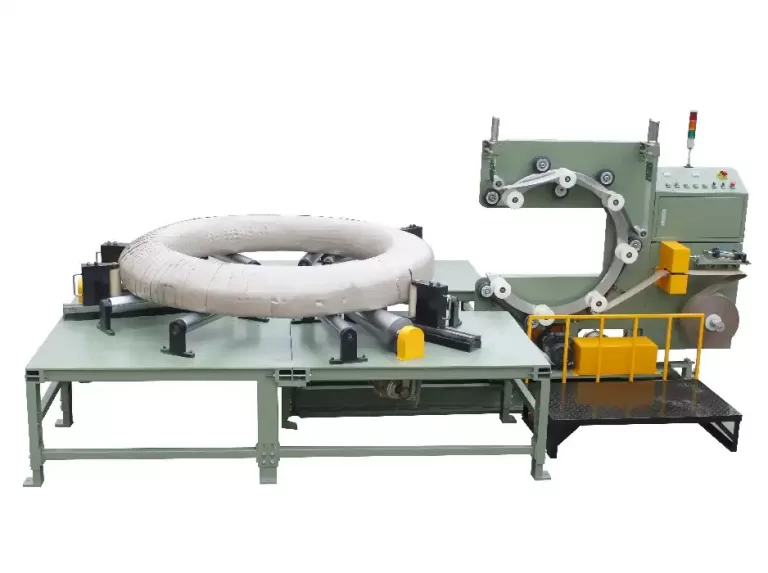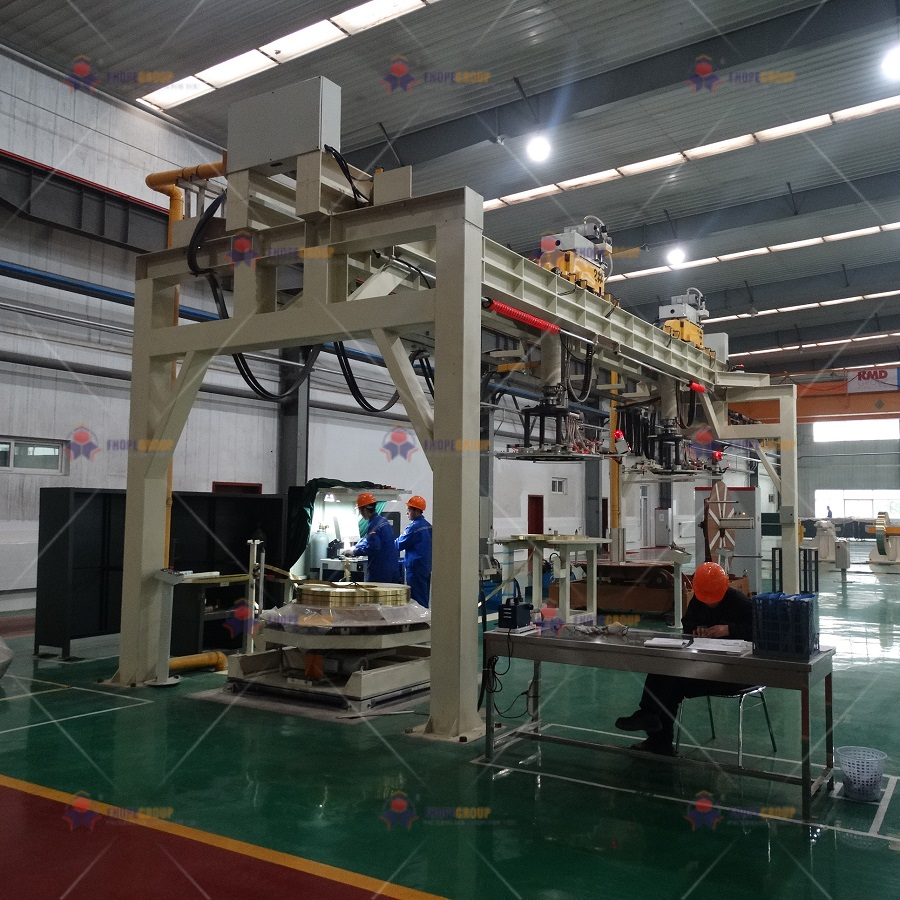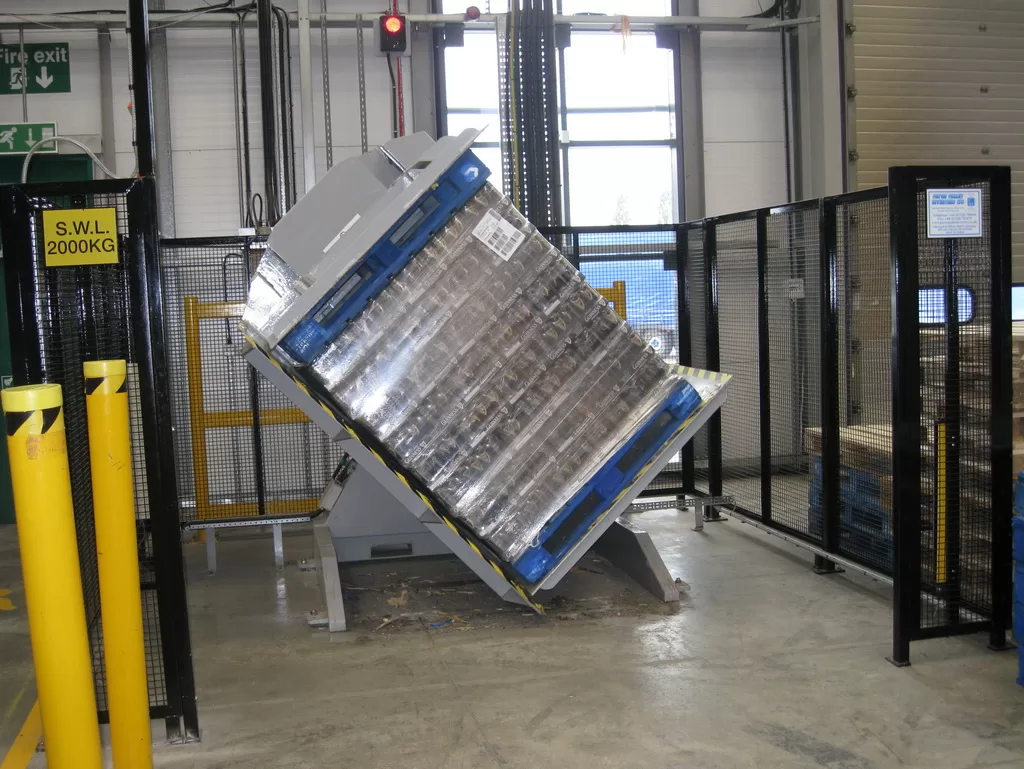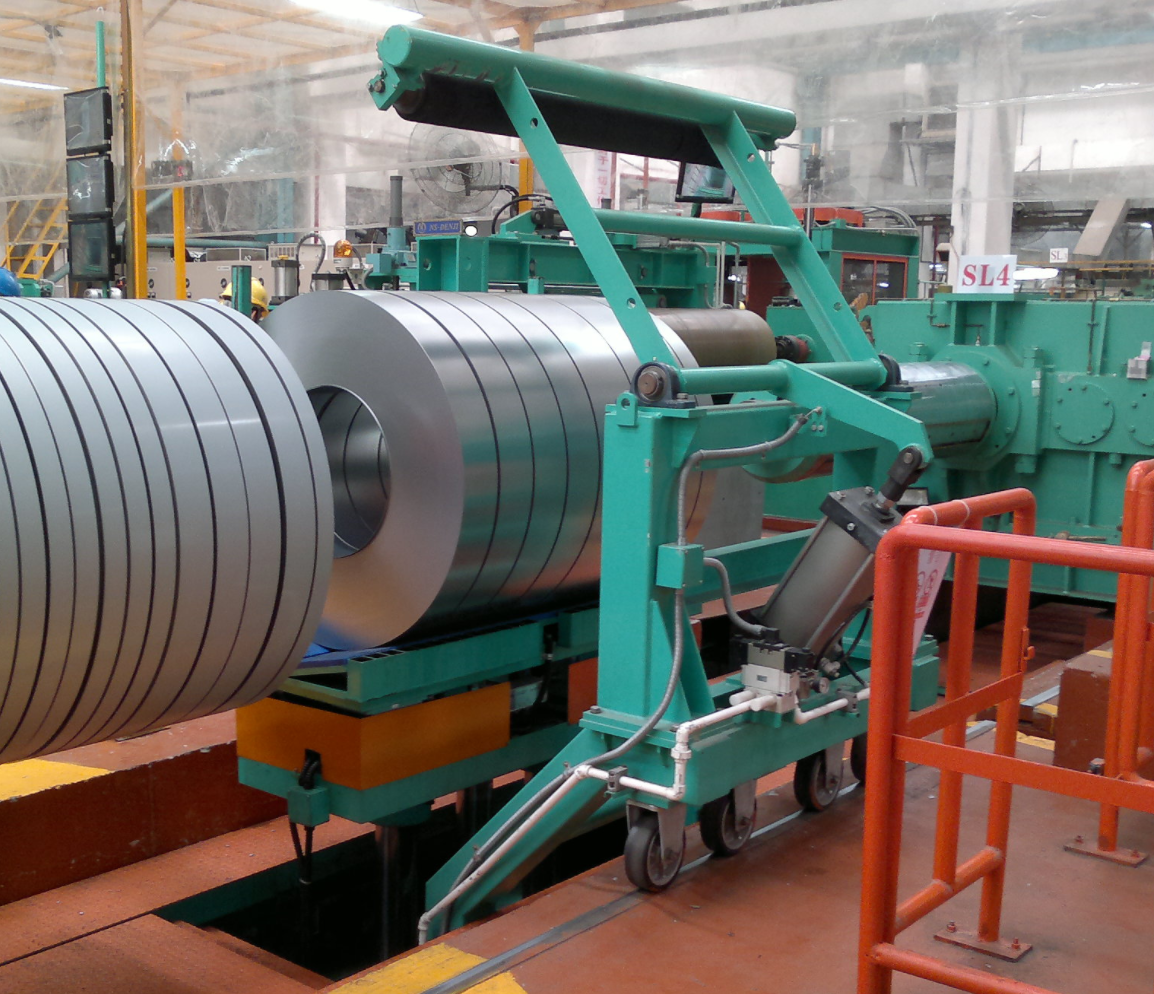Technical Solutions for Preventing Coil Damage During Transport
Damaged metal coils cripple production, cause costly delays, and waste valuable material. Are you tired of receiving coils with dents, scratches, or deformed edges? The problem lies in inadequate transport and handling methods. It’s time to implement robust technical solutions to protect your investment from the moment it leaves the supplier.
Preventing coil damage during transport involves utilizing specialized equipment like coil lifters, forklifts with coil rams, and gantry systems, combined with strict adherence to proper securing techniques and minimized handling instances. Employing appropriate tie-downs, protective packaging, and rigorous inspection protocols are critical for maintaining coil integrity from origin to destination.
Safeguarding coils during transit is a complex challenge, but mastering the right strategies and employing the correct technical solutions can significantly reduce damage. Let’s explore the essential equipment, best practices, and advanced systems designed to ensure your coils arrive in perfect condition, ready for production.
Selecting the Right Technical Equipment for Damage-Free Transport
Ensuring coils arrive without damage begins with the equipment used to move them. Relying on generic lifting gear is a recipe for disaster, as it lacks the specialized features needed to secure and protect heavy, unwieldy coils. Choosing equipment specifically designed for coil handling is a foundational technical solution.
Selecting the appropriate technical equipment like forklifts with specialized coil attachments, C-hooks, coil lifters, gantry systems, or multidirectional forklifts is paramount for preventing coil damage during transport. Each tool is engineered to cradle, secure, or support coils in ways that minimize contact stress, prevent shifting, and reduce the risk of impact or deformation during loading, transit, and unloading.

Specialized Equipment and Their Role in Coil Protection
The design of coil handling equipment focuses on distributing weight, providing stable support, and minimizing damaging contact points. Different types of equipment are suited for various tasks, coil sizes, and facility configurations. Understanding their technical advantages is key to preventing transit damage.
- Forklifts with Coil Rams/Booms: These attachments replace standard forks with a rounded ram or boom that slides through the coil’s eye. This supports the coil internally, reducing the risk of crushing the edges or bending the core, which is common with standard forks. They are efficient for loading trailers or moving coils short distances within a facility.
- C-Hooks (Coil Hooks): Suspended from overhead cranes or hoists, C-hooks engage the coil’s eye when stored "eye-vertical." Their shape ensures the load is balanced below the hook, minimizing swinging. The primary contact points are the inside of the eye and the top outer edge, which, when designed correctly, distributes the weight to prevent deformation.
- Coil Lifters (Tongs/Grabs): Ideal for coils stored "eye-horizontal," these devices use hydraulic or mechanical arms to grip the outer circumference of the coil. They provide a secure, balanced lift, drastically reducing the risk of drops or shifts. Some models feature protective padding on the gripping surfaces to prevent scratches or surface damage.
- Gantry Systems: These overhead crane structures, whether fixed or traveling, offer precise vertical and horizontal movement. Paired with specialized coil lifters or C-hooks, gantries provide highly stable transport paths, eliminating ground-level obstacles and reducing the risk of collisions or jolts that can damage coils. Traveling gantries can load directly from delivery trucks to storage or production lines, minimizing intermediate handling.
- Coil Tippers: While not transport equipment themselves, tippers prepare coils for subsequent handling and feeding by changing their orientation from "eye-to-sky" to "eye-to-side." This transition is a critical point where damage can occur if done manually or with inadequate tools. Automated or mechanical tippers ensure a controlled rotation, preventing edge damage.
- Multidirectional Forklifts: For long coils or those transported in narrow spaces, standard forklifts struggle with maneuverability, increasing the risk of scraping walls or other objects. Multidirectional forklifts can move sideways, carrying the long coil parallel to the direction of travel, ideal for navigating tight aisles and preventing corner impacts on the coil edges.
Choosing the right equipment, matched to the coil’s weight, size, material type, and the specific handling task (loading, unloading, internal transfer), is the fundamental technical requirement for damage prevention. Equipment must be regularly inspected and maintained, and operators must receive specialized training for coil handling.
| Equipment Type | Primary Benefit for Damage Prevention | Risk Mitigation Focus | Ideal for |
|---|---|---|---|
| Forklift w/ Ram/Boom | Internal support through the eye | Prevents edge crushing, core bending | Loading trucks, short internal transport ("eye-to-sky" or "eye-to-side") |
| C-Hooks | Balanced lift from the eye, minimal surface contact | Reduces surface scratches, prevents drops | Vertical lifting ("eye-vertical") from pits or specific storage |
| Coil Lifters (Tongs/Grabs) | Secure grip on outer diameter, balanced horizontal lift | Prevents drops, minimizes surface marks (with padding) | Horizontal lifting ("eye-horizontal"), precise placement |
| Gantry Systems | Controlled, stable overhead movement, direct transfer | Reduces jolts, collisions, ground-level impacts | High-volume handling, production line feeding, long material transport |
| Coil Tippers | Controlled orientation change | Prevents edge damage during "eye-to-sky" to "eye-to-side" rotation | Preparing coils for decoilers/processing lines |
| Multidirectional Forklifts | Sideways movement for long loads in confined spaces | Prevents corner/edge impacts in narrow aisles | Transporting long coils or roll-formed products |
Implementing Best Practices for Safe Coil Transport
Technical equipment provides the tools, but proper operational procedures are equally vital in preventing coil damage during transport. Accidents and damage often stem not from equipment failure but from human error, insufficient planning, or neglecting established safety protocols. Implementing rigorous best practices is a crucial technical solution.
Preventing coil damage during transport hinges on implementing strict best practices, including thorough pre-transport inspections of equipment and coils, precise loading and securing techniques using appropriately rated tie-downs and blocking, controlled vehicle speed and maneuvering, and continuous operator training. A systematic approach to planning transport paths and minimizing handling steps further reduces the risk of damage.

Operational Strategies for Damage-Free Coil Transit
Damage prevention protocols must cover every step of the transport process, from the moment the coil is selected for movement to its final destination. These strategies combine technical understanding with procedural discipline to create a safer and more reliable handling chain.
- Pre-Transport Planning and Inspection: Before any coil is moved, a plan should be in place. This includes identifying the coil, its weight, the appropriate equipment, the transport path, and the destination. Equipment must be inspected for proper function, capacity rating (ensuring it’s rated above the coil’s weight, never below), and any signs of wear or damage. The coil itself should be inspected for any pre-existing damage. Transport vehicles (truck beds, trailers) must be checked for structural integrity, cleanliness, and suitable tie-down points.
- Precise Loading Procedures: Loading coils requires careful maneuvering. Lifting should be smooth and vertical, avoiding swinging. Coils stored "eye-to-sky" on pallets may need to be lifted via the pallet or transitioned to "eye-to-side" using a tipper before loading onto certain transport types. When placing coils, care must be taken to avoid dropping them or sliding them across the surface, which can damage edges and surfaces.
- Securement Techniques: This is arguably the most critical step for preventing transit damage. Coils must be securely fastened to the transport vehicle to prevent shifting, rolling, or tipping during acceleration, braking, or turns. Industry standards dictate the number and type of tie-downs (chains, straps) and blocking or chocking required based on the coil’s weight and orientation. Tie-downs must be correctly tensioned and protected from sharp coil edges using corner protectors to prevent damage to the strap/chain or the coil edge itself. For "eye-to-sky" coils, chocks are essential to prevent rolling. For "eye-to-side" coils, cradle-like structures or blocking combined with tie-downs are needed to prevent longitudinal or vertical movement.
- In-Transit Precautions: Vehicle operators must maintain awareness of the load’s stability. Speed limits, especially within facilities or on ramps/uneven terrain, must be strictly adhered to. Sudden stops or sharp turns must be avoided. For long-distance transport, periodic checks of the tie-downs and load stability during stops are recommended.
- Minimizing Handling Steps: Every time a coil is handled, the risk of damage increases. Streamlining workflows to minimize the number of times a coil is lifted and moved is a proactive damage prevention strategy. This could involve direct loading from supplier trucks to storage, or using systems (like traveling gantries) that allow direct feeding from storage to the processing line, bypassing intermediate transfers.
- Operator Training and Certification: Proper training is fundamental. Operators must be fully proficient in the use of specific coil handling equipment, understanding load capacities, balance points, and safe maneuvering techniques. Training must also cover proper securement methods and emergency procedures. Regular refresher training combats complacency.
Adhering to these operational best practices, supported by appropriate technical equipment, creates a robust system for preventing coil damage during transport and subsequent handling, while also significantly improving workplace safety.
Optimizing Storage and Handling Techniques to Minimize Damage
Preventing coil damage isn’t limited to transport; improper storage and handling within the facility can also cause significant issues. Nicks, dents, surface corrosion, and deformation can occur if coils are stacked incorrectly, handled without care, or stored in unsuitable environments. Implementing optimized storage and handling techniques is a key technical and procedural approach to damage prevention.
Suffering from damaged coils before they even reach production? Improper storage and handling within your facility cause unnecessary scrap and delays. The solution lies in adopting specific techniques and storage configurations designed to protect coil integrity.
Minimizing coil damage during handling and storage involves selecting the optimal storage orientation ("eye-to-sky" or "eye-to-side") based on coil type and intended use, utilizing appropriate racking systems designed for the weight and dimensions of the coils, employing protective materials during storage and handling, and reducing the frequency of coil movements through optimized workflow and potential automation.

Strategic Approaches for Coil Integrity in Storage
The way coils are stored impacts their accessibility, space efficiency, and susceptibility to damage. Two primary orientations are common, each with implications for damage prevention and handling requirements.
- "Eye-to-Sky" Storage:
- Description: Coils are stored vertically on their end, with the core (the eye) facing upwards. Often stored on pallets or specialized bases.
- Advantages: Maximizes storage density per square foot, as coils can potentially be stacked higher. Good for protecting painted surfaces as the weight rests on the end.
- Disadvantages: Susceptible to water accumulation in the eye, leading to internal corrosion. Requires lifting equipment that can handle vertical loads (like C-hooks or forklifts with rams). More prone to rolling hazards if not properly secured or if the base is unstable. Requires a tipper to change orientation for many processing lines.
- "Eye-to-Side" Storage:
- Description: Coils are stored horizontally on their side, with the eye running horizontally. Stored on racks, chocks, or saddles.
- Advantages: Easier access for mandrels or decoilers that load horizontally. Reduces risk of water accumulation in the eye. More stable against rolling if properly chocked.
- Disadvantages: Requires more floor space per ton compared to high-density eye-to-sky stacking. More susceptible to surface damage if stored directly on hard surfaces without protection or if racks are not properly designed. Requires lifting equipment capable of handling horizontal loads (like coil lifters or forklifts with wide forks/special attachments).
Beyond orientation, several other technical strategies contribute to damage prevention in storage:
- Proper Racking Systems: Storage racks must be engineered to safely support the full weight and dimensions of the coils. Underrated or poorly designed racks can collapse, causing catastrophic damage to coils and posing severe safety risks. Racks for eye-to-side storage should have smooth, rounded saddles to support the coil’s circumference without creating pressure points or scratches. Eye-to-sky storage requires stable bases or pallets that prevent rolling and distribute weight evenly.
- Protective Measures: Utilizing protective materials is a simple yet effective technical solution. Rubber mats or wooden blocks can be placed on storage surfaces (racks, pallets, truck beds) to cushion the coil and prevent scratches or dents. Edge protectors made of plastic or cardboard can shield the vulnerable outer wraps of the coil during lifting and storage. Protective films or wrapping (like VCI paper or stretch film) can guard against moisture and corrosion, especially in humid environments or for long-term storage.
- Environmental Control: For sensitive materials or painted coils, controlling the storage environment (temperature and humidity) can prevent condensation and corrosion, which degrades coil quality from the outside in.
- Planned Layout and Workflow: Optimizing the storage area layout to minimize travel distances and handling steps between storage and processing reduces opportunities for accidental damage. Positioning frequently used coils closer to the production line, for example, decreases the number of times they need to be moved across the facility.
- Quality Control and Inspection: Implementing a rigorous inspection process for incoming coils and conducting periodic checks of stored coils helps identify potential damage early. Documenting coil condition upon arrival and throughout its time in storage allows for tracking and prevents damaged coils from entering the production stream unknowingly.
By combining optimized storage configurations with proper racking, protective materials, environmental control, efficient layout, and consistent quality control, businesses can significantly reduce coil damage within the facility, preserving material quality and operational efficiency.
Leveraging Automation and Advanced Techniques for Enhanced Coil Protection
Moving beyond traditional methods, automation and advanced technical solutions represent the future of coil handling and transport, offering significant potential for damage prevention, increased efficiency, and improved safety. While requiring upfront investment, these technologies can dramatically reduce human error and introduce precision into the handling process.

Implementing automated systems is a cutting-edge technical solution for preventing coil damage during transport and handling. Automated guided vehicles (AGVs), robotic loaders, and automated storage and retrieval systems (AS/RS) can move coils along pre-programmed paths with consistent speed and precision, drastically reducing the risk of collisions, drops, or mishandling caused by human variability or fatigue. These systems ensure coils are handled and transported using pre-defined movements, minimizing sudden stops, impacts, and inaccurate placement, thereby preventing damage. This level of precision is difficult to achieve with manual operations, especially when handling very heavy or delicate coils.
Advanced techniques also include sophisticated inventory management systems integrated with handling equipment. Knowing the exact location, weight, and status of every coil minimizes unnecessary searching and handling. When combined with automated retrieval systems, the correct coil can be accessed and transported directly to the processing line with minimal intermediate steps, further reducing damage potential. Technologies like laser guidance, vision systems, and proximity sensors on handling equipment (both manual and automated) can provide real-time feedback to operators or control systems, helping to prevent collisions with walls, racks, or other coils. Precision placement is crucial, and these sensors can ensure coils are set down gently and accurately. Furthermore, condition monitoring of handling equipment using IoT sensors can predict potential failures (like hydraulic leaks or winch issues) that could lead to dropped or damaged coils, allowing for preventative maintenance before an incident occurs. Investing in comprehensive operator training for advanced equipment and automated systems is also a critical technical step, ensuring personnel can supervise, troubleshoot, and operate these complex solutions safely and effectively. The integration of these advanced technical solutions creates a highly controlled environment, significantly mitigating the risks inherent in coil handling and transport and ensuring materials are protected throughout the supply chain within the facility.
Conclusion
Preventing coil damage during transport is a multifaceted challenge that demands a combination of the right technical solutions, rigorous best practices, and continuous attention to detail. By investing in specialized coil handling equipment, implementing strict loading, securing, and storage protocols, and exploring the benefits of automation and advanced monitoring technologies, businesses can significantly reduce costly damage. A commitment to training and a culture of safety ensures that these technical and procedural safeguards are consistently applied, protecting both valuable material and personnel throughout the coil handling chain. Prioritizing damage prevention is not just about preserving product quality; it’s a fundamental aspect of operational efficiency and profitability in the metal processing industry.










